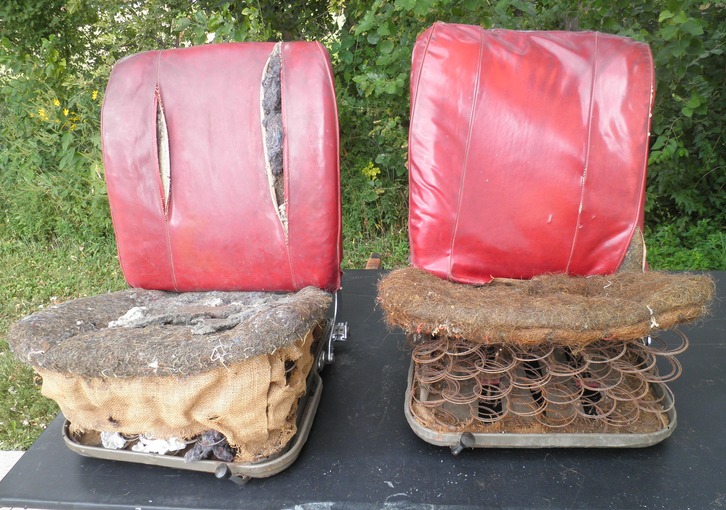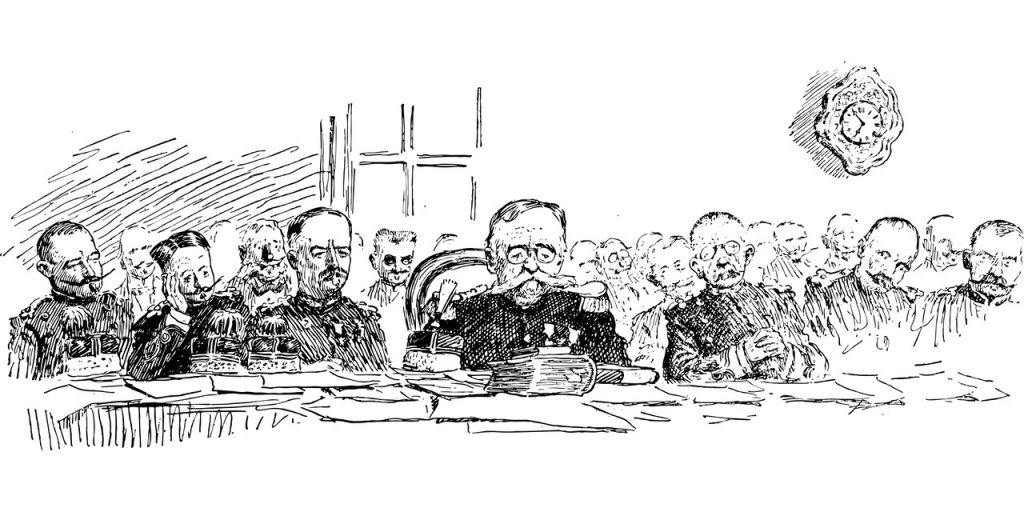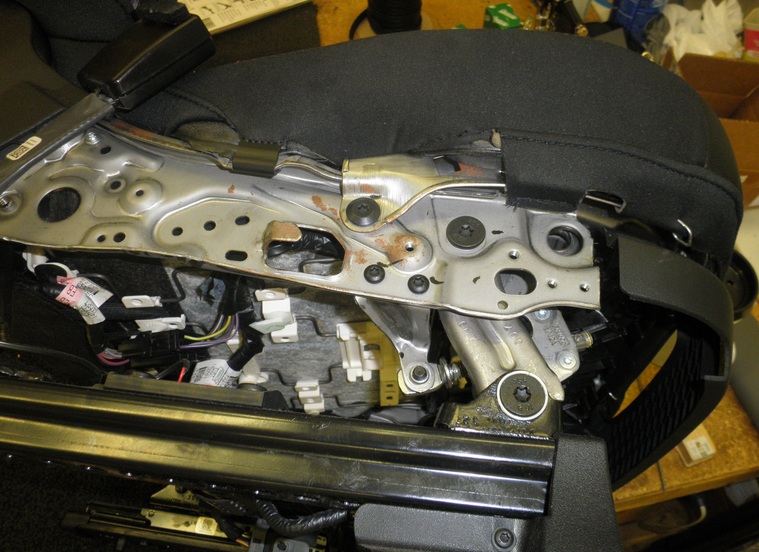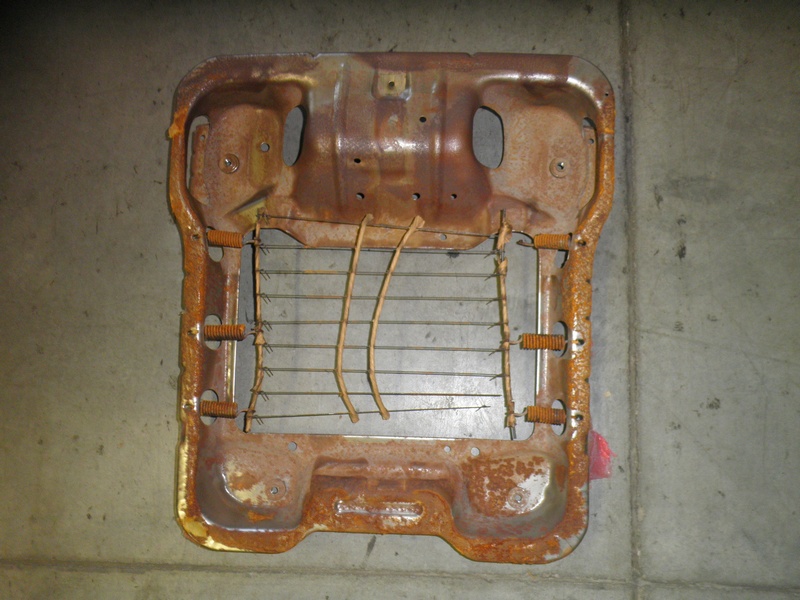About Upholstery
The craft, technology, and history
 What is upholstery?
What is upholstery?
Haven’t you always been curious about the world of upholstery? I’m guessing not, and at one time, I was not either. When I started thinking about the trade, I began to realize that I belong to a profession that goes way back beyond recorded history. Sometimes I try to imagine the very first upholsterer – probably some guy who realized that the rock he was sitting on was more comfortable when he threw an animal fur over it.
So what is upholstery, and what’s it all about? Let’s investigate.
The concept of upholstery is to make a seat more stylish and/or comfortable by making either a new seat or repairing/restoring an old one.
There are four basic elements of a seat:
- The frame
- The springs
- The cushion
- The cover
While a seat can be made to look new by changing just the cover, you can only achieve comfort and durability by addressing the other three elements.
If you want your seat to look better, feel more comfortable, and last longer, be sure that the upholsterer you choose cares about the whole seat and evaluates the condition of all four seat elements.

How about the word upholstery? Strange word, isn’t it? I looked it up on the Online Etymology Dictionary, and it is apparently a back formation of the word ‘upholsterer,’ meaning upholsterer was a word before upholstery was.
“upholsterer (n.) tradesman who finishes or repairs articles of furniture” (1610s), from upholdester (early 15c.; early 14c. as a surname), formed with diminutive (originally fem.) suffix -ster + obsolete Middle English noun upholder “dealer in small goods” (c. 1300), from upholden “to repair, uphold, keep from falling or sinking” (in this case, by stuffing); see uphold (v.).

So in England, in the 1300s, upholdester was somebody’s name. I remember hearing that a lot of English names come from the type of work people did (Baker, Mason, Miller, Cooper, etc.), so there must have been some families named Upholdester at one time. I don’t think they got around much because I don’t know any Upholdesters. Nonetheless, long ago in feudal Europe, craftsmen were important and respected members of the community. Medieval society was very stratified, and if you weren’t a craftsman, you were either a noble or a serf. You could only be a noble by birth or marriage, and serfs were essentially slave labor who toiled in the fields, so the craftsmen of the towns had a certain prestige.


Craftsman eventually formed associations, and there was a time when the trade guilds of Europe were a very powerful group – think of them as the insurance, oil, and pharmacy lobbyists of today, and they held strong political influence. Here’s an excerpt from the Encyclopedia Brittanica.
“In order to attain and protect their monopoly, the guilds acquired a political voice and in some locations achieved the right to elect a number of their own members to the town council. In some towns, such as Liège, Utrecht, and Cologne, guilds achieved complete political control. The 32 craft guilds in Liège, for example, so dominated the town after 1384 that they named the town council and governors and required all important civic decisions to be approved by a majority vote of their membership.”
The industrial revolution and mass production shook up the world of craftsmen. Now many of the old trades are carried on by a small number of independent shops scattered around. Upholsterers have managed to hang on by restoring, customizing and improving what comes out of mass production.
Automotive upholstery is one of several specialized branches of the trade. It has grown to be quite unique from furniture upholstery – to the point where many shops do either one or the other. The tools, supplies, and techniques differ enough that a shop has to invest more time and money to offer services in boh fields. Specializing in one or the other allows a shop to control costs and focus on consistency. The distinction between auto upholstery and furniture upholstery also has a long history because auto upholstery grew out of the carriage making industry.

Nonetheless, the earliest seats in a carriage or a car were essentially wood framed furniture made to fit a particular shape. Today, automotive seats are very different from household furniture. Metal seat frames are designed to collapse a certain way to absorb crash impact. In the US, almost all vehicles are manufactured with in seat air bags. Special sewing technology produces seams that easily break apart when the air bag inflates. Automotive seats can be adjusted to fit a range of body shapes and to provide various levels of comfort. In seat heaters, cooling fans, lumbar support and even massage units are all part of the modern automotive seat. A master auto upholsterer must understand how all these technologies work and be able to service them.
Hopefully, the next time you drive past an upholstery shop, you’ll have a deeper appreciation of the kind of work that goes on there.
Automotive Seat Design
an overview of seat types
The most common type of seat design is the frame/spring type mentioned at the top of this web page. Here are the components of this type of seat.
There are other seat designs, and the main differences are usually in the type of suspension system used. The seats pictured above use springs for suspension. Here are a few alternatives.
Seat sling

Cushion only seats
Many seats are simply a layer or layers of cushioning on top of a hard surface. Most common among these is polyurethane foam on top of a sheet of plywood. These were popular in boats, golf carts, industrial machinery like tractors and forklifts, and anywhere a quick and easy padded seat is needed.
This type of seat is easy to make, but without some kind of spring/suspension base, the foam breaks down quickly and is not a efficient long term seating solution.

State of the Industry
Auto upholstery as an organized trade

According to an article by NPR, there were close to 100,000 trade associations in the US around 2010. An association specifically for automotive upholstery shops was not among them.
The last trade association for auto upholstery shops in the US was NAATS (National Association of Auto Trim Shops), founded by Nat Danas in 1953. The association’s monthly publication, Auto Trim News, featured shop profiles, technical information, business advice and directories of suppliers. NAATS also offered a Master Craftsman certification to members with a prescribed amount of experience and who vowed to abide by a code of ethics.
Danas sold Auto Trim News in 1991, and NAATS gradually faded away after years of having a strong influence on auto upholstery shops across the US. Do a Google search of you’ll find many shops who still proudly show off their certification.






